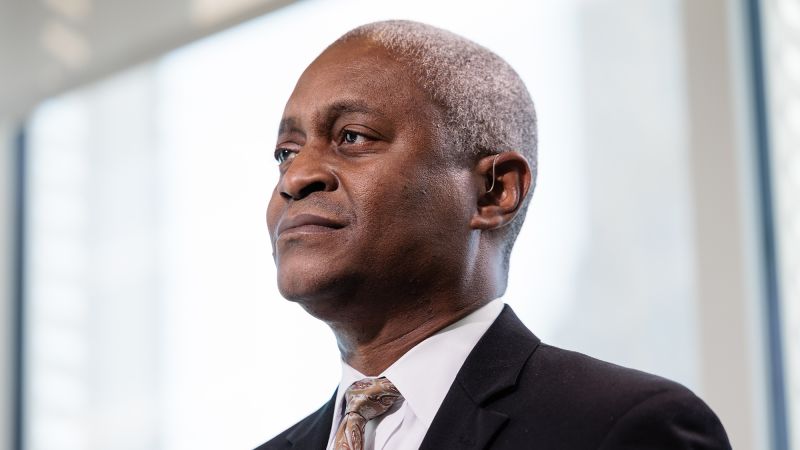Bumpy and slow is how a top Federal Reserve official sees inflation’s trajectory this year. Translation: Don’t get your hopes up for rate cuts in the next few months.
Atlanta Fed President Raphael Bostic, who is voting on the Federal Open Market Committee’s policy decisions this year, told CNN in an exclusive interview that he is anticipating the nation’s inflation rate — which currently stands at around 3% — will be near “the lower twos” by the end of 2024.
“With that outlook, I really see the first move coming sometime in the summertime,” he said, regarding lowering interest rates that currently sit at a 23-year high.
Bostic said he’s been both surprised and pleased by the strength of the labor market. January’s monthly jobs report stunned economists with the 353,000 new jobs added, which was well above expectations, leaving the unemployment rate below 4% for the 24th consecutive month.
“The question is sort of what is the underlying implication for how fast inflation can get back to 2%?” he said, adding that current economic conditions could work against Americans by helping keep prices elevated. That’s because when unemployment is low, people have more money to spend — which makes it easier for businesses to raise prices.
Since the Fed’s first policy meeting this year, officials have worked together to temper market expectations on the timing of interest rate cuts. Going into that meeting, the majority of investors believed the central bank would start cutting rates as early as the Fed’s next meeting in March.
That quickly changed after the committee’s post-meeting statement said officials don’t foresee cutting rates until they’ve “gained greater confidence that inflation is moving sustainably toward 2 percent,” the Fed’s target level for inflation.
Fed Chair Jerome Powell reinforced that, saying, “It’s not likely that this committee will reach that level of confidence in time for the March meeting” in an interview that aired on CBS’ “60 Minutes” earlier this month. He also made similar remarks in his press conference after last month’s meeting, causing markets to close much lower for the day.
Bostic’s views on when it makes sense to start cutting rates are further out than the mid-year expectations most Fed officials have expressed, which is in line with current market expectations. In total, Fed officials anticipate three rate cuts this year, according to their latest Summary of Economic Projections, published at the end of last year.
Around that time, Bostic said he saw the first rate cut happening in the fourth quarter of this year. As inflation kept moving closer to the Fed’s target, he pulled forward his expectations on cuts.
“If that were to continue, I’d be open to pulling it forward more,” Bostic said. But he added that he’d need to see more data to confirm “the things that we’re seeing today are not head fakes, but rather, are really enduring and robust and true to where the economy is.”
It could be months before he sees any kind of evidence that answers that question, he said.
“This isn’t a TikTok video or something like that where you get trends happening so fast. It takes a while for the decisions of individual decisions and millions of people to come together and to start to create trends,” he told CNN.
At the same time, there’s a significant risk if the Fed leaves interest rates where they currently are for too long because if inflation were to cool even more, that could end up keeping the economy on too tight a leash.
Bostic’s latest comments come ahead of the first inflation report of 2024 that is due Tuesday morning at 8:30 am ET. US consumer prices rose 3.4% annually to close out 2023, capping a year of substantial progress.
Economists expect the annual overall inflation rate measured by the Consumer Price Index to fall to 2.9% from December’s headline reading, according to FactSet consensus estimates. But stripping away food and energy prices, so-called core inflation is expected to cool much slower to 3.7% last month from 3.9% in December.
Bostic is getting reassurance that the Fed is on the right track from conversations he’s had with business owners and people living in his district, which includes Alabama, Florida and Georgia and portions of Louisiana, Mississippi and Tennessee.
“I’ve been surprised at how comfortable people are with where we are right now and they see a brighter day coming forward.” But he’s keenly aware that high prices are taking a toll on people.
Fed officials like himself, he said, “live the economy too.”
“I have to go to the grocery store like everybody else. I buy gas like everybody else,” Bostic said. “We are not in an ivory tower abstractly thinking about things.”
Read the full article here
